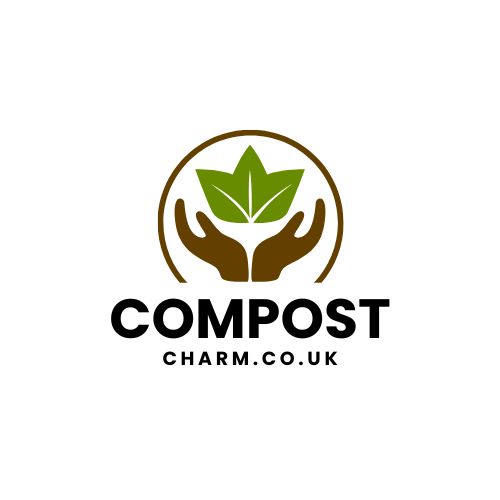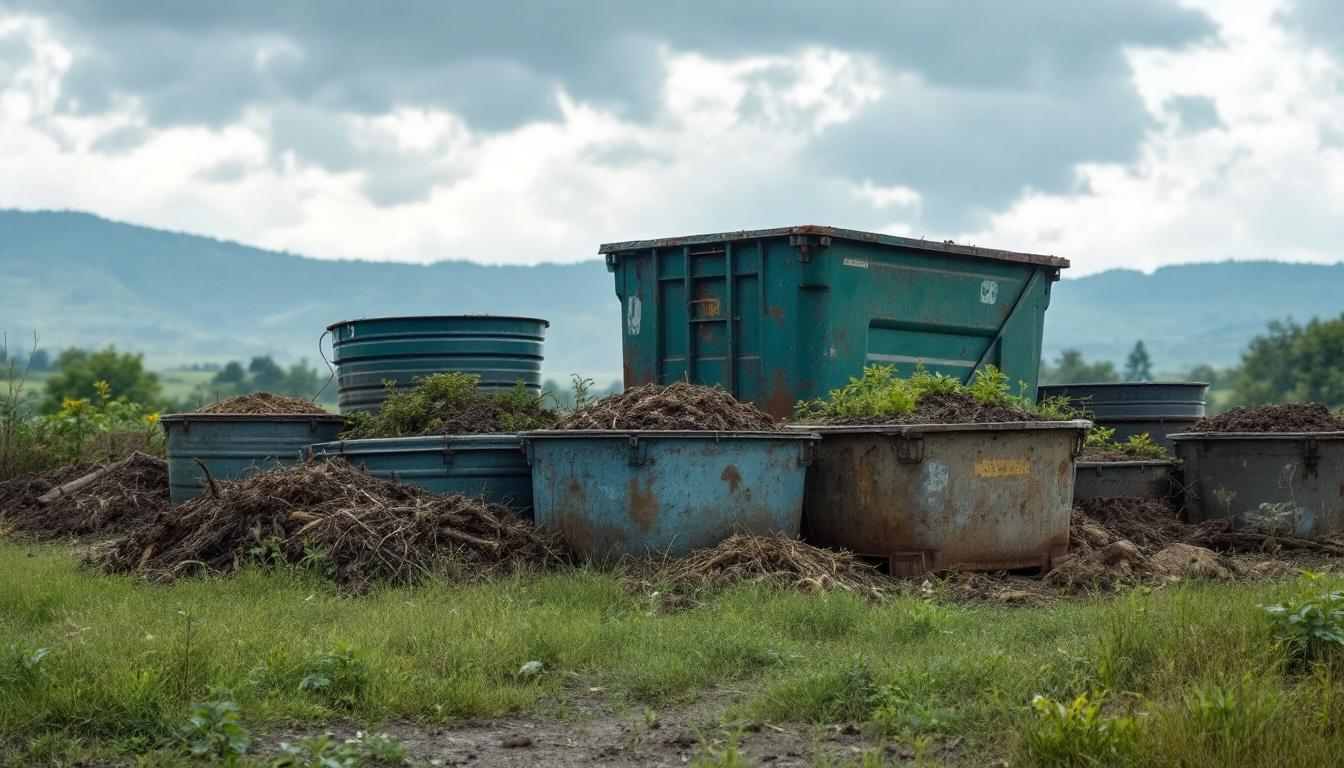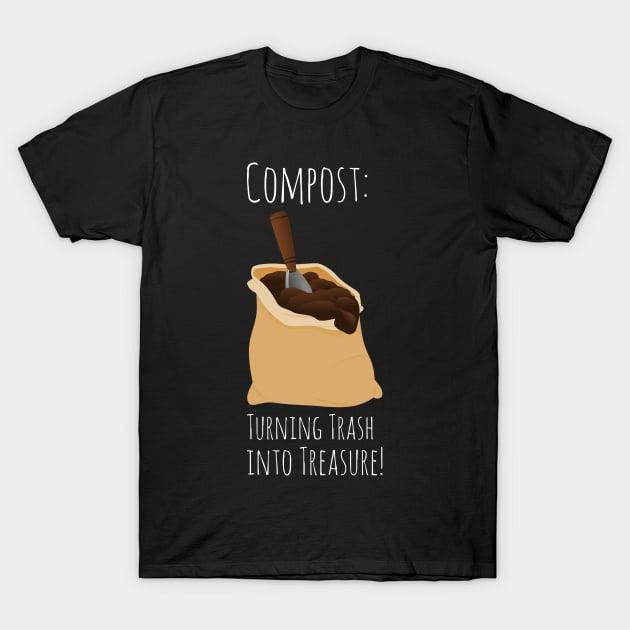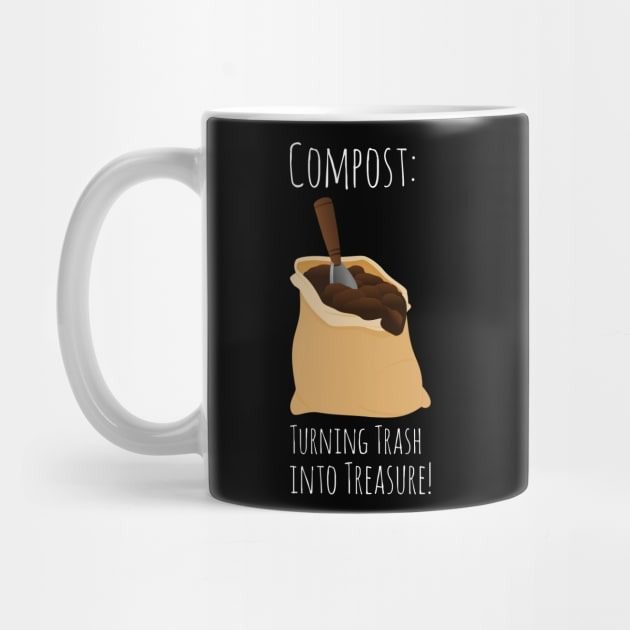Easy Ways to Reuse, Refresh, and Recycle
Wondering what to do with old compost from containers? The good news is you don’t have to toss it out.
You can reuse, refresh, or recycle this compost to boost your garden, start new seedlings, or feed your soil.
Composting—simply put, turning organic waste into rich, earthy soil—is good for your plants and even better for our planet.
Vermicomposting adds worms to the mix, which helps break compost down faster and keeps things natural.
Tools like a compost tumbler make composting at home cleaner and easier than ever.
In this article, you’ll learn friendly ways to give old compost a second life, why recycling garden waste matters, and handy tips for using compost, vermicomposting, and compost tumblers.
If you want to grow greener and waste less, you’re in the right spot.
Key Takeaways:
- Old container compost can be reused, refreshed, or fully recycled.
- Composting helps reduce garden waste and enriches soil.
- Vermicomposting and compost tumblers are useful for easy composting.
- You’ll get practical ways to make compost last longer and go further in your garden.
- For more creative ways to recycle and reuse, check out the Don’t Toss It Campaign.
What Happens to Compost in Containers?
Compost in containers works hard all season long, feeding your plants and keeping their roots cozy. But after a while, the magic fades.
Many gardeners wonder, what to do with old compost from containers? The short answer: compost can lose nutrients, become compacted, and start to break down into something less helpful for plant growth.
Understanding how and why this happens helps you care for your soil, so your garden stays healthy year after year.
Why Compost Gets Tired: The Science in Simple Terms
 Photo by Greta Hoffman
Photo by Greta Hoffman
Let’s keep it simple: compost doesn’t last forever. It’s a living thing, full of microbes, nutrients, and bits of organic matter.
Over time, a few things happen:
- Nutrient Depletion: Plants in containers gobble up nutrients from compost, especially if you grow hungry crops like tomatoes. By the end of the season, a lot of those nutrients are gone.
- Compaction: Roots wiggle through, water settles, and all the “fluffy” structure gets squished. Tight, compacted compost doesn’t drain well or let roots breathe.
- Breakdown of Organic Matter: Compost starts as chunky, crumbly stuff. Over months, microbes keep munching, and what’s left is finer, more soil-like material with less energy for new plants.
Healthy soil feeds your plants and lets water move freely. Tired compost, in contrast, can starve roots and suffocate them at the same time.
If you want to learn more about easy and beginner-friendly ways to make and use compost at home (including compost tumblers and vermicomposting), check out the handy guide to starting composting at home.
Signs Your Container Compost Needs a Change
How do you know when it’s time to swap out that old compost? Here are the top signs your container compost needs a refresh:
- Plants Struggle to Grow: If your plants look weak, have yellow leaves, or barely flower or fruit, they might be hungry.
- Compacted or Dense Texture: When compost feels hard, heavy, or doesn’t crumble anymore, roots can’t spread out or get enough air.
- Bad Smell: Compost should smell earthy and fresh. If it smells sour or rotten, something’s gone wrong. It could be too wet or lacking air, which means it’s rotting, not composting. As explained by the US EPA in their composting advice, healthy compost needs good airflow.
- Water Pools on Top: Old, compacted compost sheds water instead of soaking it up. This can drown roots and make plants unhappy.
- Loads of Tiny Roots or Old Plant Debris: When you empty a container and see lots of root mats or leftover plant bits, your compost is overdue for a change.
- Worms Are Missing: In vermicomposting, worms disappear if the compost quality takes a dive. Healthy bins are usually squirming with life!
Keeping a close eye on these warning signs means you won’t have to guess. If something seems off, it’s probably time to swap in some fresh compost or mix in new organic matter.
For troubleshooting common composting problems, the 7 signs your compost is struggling resource is full of quick fixes and solutions.
Key Takeaway: Old compost from containers gets depleted, compacted, or loses its structure, making it less effective.
If your plants look sad, the compost smells off, or the soil seems too packed, it’s time to refresh for better growth.
If you want a full cheat sheet on the types of composting you can try (from simple bins to compost tumblers and beyond), check out 6 effective composting methods.
There’s always a way to bring tired compost back to life!
Best Ways to Reuse and Recycle Old Container Compost
If you find yourself wondering what to do with old compost from containers, you’re not alone. The end of a growing season often leaves extra compost that isn’t quite ready for the bin but feels too valuable to waste.
The good news? That tired compost is packed with potential, and there are several cheerful, sustainable ways you can reuse and refresh it. Let’s dig into the best methods for putting that used soil back to work.
Top Methods for Reusing Old Compost
Old compost from containers still contains organic matter and structure—don’t throw it out just yet.
Here are some helpful ways to make full use of what’s left:
- Soil Conditioner for Garden Beds: Mix old compost right into your flower, veggie, or shrub beds. The organic matter improves texture, helps sandy soil keep water, and breaks up heavy clay. While it may not have as many nutrients as before, it’s still valuable for boosting soil quality.
- Mulch Around Plants: Sprinkle your old compost as mulch over garden beds. This protects roots, holds moisture, and helps block weeds. Even if it’s a bit crumbly or dry, it still works to cushion your plants.
- Blend into Potting Mixes: Don’t toss it! Add up to one-third old compost to homemade potting soil for containers, raised planters, or seed trays. Combine with fresh compost, coco coir, or perlite for a simple, budget-friendly potting solution. Dive into the details with this guide on using compost as potting soil.
You might also consider using old compost to topdress your lawn or as a filler under new soil in large pots.
While 100% old compost isn’t ideal on its own for new plantings, blending it into other soil mixes brings plenty of benefits—as noted in The Difference Between Topsoil, Compost & Potting Mix.
Key Takeaway: Old container compost shines when you recycle it as soil conditioner, mulch, or as part of a fresh mix.
Refreshing Tired Compost: Simple Tricks
If your old compost seems worn out, you can give it new life with a quick refresh. Even composting pros use these easy tricks to bring back its power:
- Mix in Fresh Green and Brown Material: Add small amounts of fresh grass clippings, veggie scraps, or dry leaves. This bolsters nutrients and wakes up the composting microbes.
- Add Worm Castings or Worms: Vermicomposting is a fun, eco-friendly way to boost tired compost. If you have a worm bin, sprinkle a bit of castings (the worms’ natural fertilizer) into your old compost, or add a few worms directly—they’ll keep breaking things down.
- Feed in More Nutrients: Boost with organic fertilizers, like bone meal or kelp, to recharge nutrients for another round of growing.
- Use a Compost Tumbler: Spin your tired compost in a compost tumbler with fresh greens and browns. This helps mix air and speed up the refresh. Many home gardeners have even added old potting mix into compost tumblers and had great results. See one gardener’s story about adding old mix and layering in a tumbler composter.
A well-refreshed batch can work for potting up new herbs or seedlings, helping you cut waste and save money.
For more ideas, check out advice on how to restart your neglected compost bin.
Try this quick fix: Mix one part old compost with one part fresh greens (like veggie skins) and one part dry browns (like shredded cardboard).
Toss well, let it sit for a few weeks, and it’ll spring back to life.
When to Retire Compost: Starting Fresh or Layering
Sometimes old compost from containers truly is used up. If it’s heavy, crumbly, and low in structure even after refreshing, it might be time to say goodbye—or at least move it to a new role.
- When to Replace: If your plants continue to struggle, or the compost stays dense and soggy, use it as a bottom layer for pots or garden beds. Then add fresh compost or soil on top where roots will grow.
- Layering in Compost Bins or Tumblers: Make good use by adding spent compost to a compost tumbler or heap. Layer it at the bottom as a base, then top with kitchen scraps and garden clippings. The older compost helps jumpstart new batches.
- Small Spaces? No Problem! If you’re working in a patio, balcony, or tiny yard, layering works great. Stack new material on old compost in a compact bin or tumbler. Need tips for limited spots? Get smart ideas from composting in small backyards.
If your compost pile is more like a tired pile of potting soil, and there’s nowhere outdoors to spread it, you can safely send it to your community green waste collection.
Key Takeaway: Retire old compost when refreshing no longer helps.
Layer it below new material or into your compost bin or tumbler—no waste, just smarter recycling!
 Photo by SHVETS production
Photo by SHVETS production
If you’re looking for seasonal advice on when to refresh or retire your compost, the Compost Charm guide on seasonal composting tips is a handy resource.
Summary of Key Points:
- Old compost makes a great soil conditioner, mulch, or addition to fresh mixes.
- Refresh tired compost by adding new organic matter, worm castings, or nutrients.
- Retire and recycle compost by layering in bins, tumblers, or garden beds.
- Composting, vermicomposting, and clever use of compost tumblers all help recycle “worn out” material.
- Don’t forget to use helpful resources, like Compost Charm’s composting FAQ tool, for fast answers.
Whether you’re reusing, reviving, or recycling, there’s no need to let old compost go to waste. Give these tips a try for happy plants and a greener home.
Going the Extra Sustainable Mile: Creative Uses for Spent Compost
Ever wondered what to do with old compost from containers once your plants are finished for the season? Don’t limit it to just “add to the garden and hope for the best.”
Giving spent compost a second life can actually be a lot more fun—and way more useful—than you might expect!
With just a bit of creativity, that tired-looking mix transforms from yesterday’s plant playground into today’s handy gardening sidekick.
Let’s look at quirky, clever, and surprisingly helpful ways to use up every last bit.
Compost Beyond the Container: Odd Jobs and Perks
 Photo by hans middendorp
Photo by hans middendorp
Old compost doesn’t have to retire quietly. Think of it like the dependable grandparent of gardening—maybe not as fast as it used to be, but packed with wisdom and always keen to help.
Here are some not-so-obvious ways to tap into the hidden talents of spent compost:
- Pathway Softener: Tired of muddy boots? Spread spent compost over garden paths. It helps absorb water and softens the ground—plus, you can skip the gym after all that wheelbarrow work!
- Soil Loosener for Lawn Repair: Got bare patches in your turf? Sprinkle a layer of old compost, press grass seed in, and watch the magic happen. It’s like a comfy mattress for new roots.
- Pot Filler for Large Containers: Why waste pricey new compost at the bottom of deep planters? Fill the lower half with spent mix. This keeps pots lighter and lets new compost nourish plant roots where they need it most.
- Habitat Booster for Wildlife: Pile up spent compost in a quiet garden corner. Worms, beetles, and frogs will move in, helping with natural pest control and bringing your backyard ecosystem to life.
- Compost Tumbler Starter: Spent compost speeds up the breakdown of fresh material. Add it to your compost tumbler, and the microbes inside get a fresh meal and a good workout. For details on boosting the efficiency of your bin, check out the handy garden compost tumblers guide.
- Build a “Lasagna” Bed: Layer old compost with cardboard, leaves, and green clippings right onto a new garden spot. Soon, you’ll have a rich, no-dig garden growing from yesterday’s leftovers.
If you’re feeling playful, sprinkle old compost on bare soil and let the neighborhood birds do some natural mixing for you.
Or, rescue that spent mix and use it for “mystery seed” pots—where whatever sprouts gets a chance to shine, even if it’s just a surprise pumpkin vine in your petunias.
For more inspiration on creative recycling, the Royal Horticultural Society shares even more ideas to reuse spent compost in ways that help both soil and the environment.
Feeling thrifty? Discover additional reuse tips with this practical guide to nifty, thrifty ways to reuse potting soil, which is packed with clever home gardener hacks.
Keep experimenting, and remember—sustainability isn’t about perfection, it’s about making the most of what you already have.
So go on, have a laugh, try something new, and let your compost continue to work its magic, long after it’s left the container.
Summary and Key Takeaways: Smart Composting for Every Gardener
Finishing up a garden season means wondering what to do with old compost from containers. You’ve worked hard to create that rich, dark mix and it’s only right to squeeze every bit of value from it.
Smart composting is all about making the most of what you have—turning used compost into new opportunities for your plants, your soil, and your sustainable lifestyle.
This section covers the highlights and practical pearls you need to keep using, refreshing, and recycling your compost wisely—whether you use a standard heap, vermicomposting, or a trusty compost tumbler.
 Photo by Greta Hoffman
Photo by Greta Hoffman
The Bottom Line: What to Do with Old Compost from Containers
- Old compost isn’t waste: Whether it looks tired or crumbly, it still holds plenty of value as a soil improver, mulch, or filler.
- Refresh, reuse, recycle: Mix in new organic matter, add nutrients, or work it into garden beds and you instantly boost structure and support soil life.
- Keep it moving: Layering old compost under new potting mixes or in garden beds prevents landfill waste and keeps your green routine humming along.
- No compost left behind: Even seemingly exhausted compost can help start a new batch, especially when building a pile in a compost tumbler or worm bin.
For step-by-step guides and inspiration, explore the benefits of composting and start composting at home with easy methods.
Practical Wisdom: Key Takeaways Every Gardener Should Know
If you only remember a few things, let these points stick:
- Compost is never “finished”—it simply moves on to its next job. With smart composting, nothing goes to waste.
- Tired compost makes great mulch and soil conditioner. Spent mix can still improve water retention and soil health in flower beds or under shrubs.
- Compost tumblers and vermicomposting keep the cycle going. Add old compost to a tumbler or worm bin to speed up fresh batches and close the recycling loop at home.
- Layer, mix, and refresh. Combine old compost with green or brown matter, or use it as a base in new plantings.
- You don’t have to do it all at once. Small, regular recycling and refreshing is easier than trying to manage one giant heap.
Curious how other gardeners are reusing container compost? The RHS guide to reusing spent compost shows even more creative ways to keep your garden green and waste-free.
Inspiring Sustainable Habits
Living green is about making smart, gentle changes—not perfection. Through composting, vermicomposting, and using tools like compost tumblers, you give your soil a second (or third) life.
The question “what to do with old compost from containers” turns into an opportunity to experiment and learn.
- Take your time as you build composting habits.
- Mix old and new materials to get better results.
- Don’t be afraid to try creative uses in your garden or yard.
If you get stuck, the Compost Charm composting FAQ tool gives instant answers for every compost or recycling puzzle you encounter.
Quick-Scan Key Takeaways
Here’s a handy list to help you remember the essentials:
- Don’t toss old compost—reuse it for soil, mulch, or compost starter.
- Refresh old mix with worm castings or organic fertilizer.
- Layer spent compost at the bottom of beds or planters.
- Revitalize tired batches in a compost tumbler or worm bin.
- Keep the cycle moving—compost is a resource, not rubbish!
Practicing smart composting saves money, cuts down on waste, and grows healthier plants—all from that “used up” mix.
For those keen on easy, year-round composting, take a look at seasonal composting calendar tips.
Old compost may be done in one pot, but its journey through your garden is far from over—especially when you see its hidden potential, one scoop at a time.
Frequently Asked Questions About Old Compost from Containers
Compost in containers works hard to help your plants grow, but once its main job is done, questions start to pop up.
If you’re scratching your head about what to do with old compost from containers, you’re not alone. Clearing up these common questions can make reusing, refreshing, and recycling compost much simpler.
Let’s dive into some of the top things gardeners want to know, with answers you can use right away.
Can I Reuse Old Compost from Containers?
Absolutely. Old compost from containers may look tired, but it’s still packed with organic matter that can benefit your garden.
Here’s how you can put it to work:
- Mix it into garden beds as a soil conditioner.
- Use it to mulch around plants.
- Fill the bottom of large planters before topping with fresh soil.
- Add it to a compost bin or compost tumbler along with new kitchen scraps to jumpstart the next round of composting.
Some gardeners wonder if reusing compost spreads disease. If your plants were healthy, there’s little risk.
Avoid reusing soil if you noticed any root diseases or pests, and simply recycle it through your compost system instead.
Is It Okay to Grow New Plants in Old Compost?
It’s not the best idea to use 100% old compost for new plantings. Over time, nutrients get used up, and the texture can become dense or compacted.
However, you can blend old compost with fresh compost, topsoil, or materials like perlite to make a usable mix for flowers, veggies, or herbs.
Aim for about one-third old compost in new potting blends.
If you want more on this, the Royal Horticultural Society explains how to reuse spent compost safely and effectively.
Does Old Compost Still Have Nutrients?
Old compost loses some nutrients as your plants use them up, but it still offers organic matter that improves soil structure and helps retain moisture.
To give it a second wind, mix in fresh kitchen scraps, grass clippings, or an organic fertilizer.
For an extra boost, add worm castings or try vermicomposting to enrich depleted compost.
What If My Old Compost Looks or Smells Bad?
If your compost smells off or feels slimy, it may be too wet and lack air. Let it dry out, mix in shredded cardboard or dry leaves, and fluff it up.
Healthy compost should smell earthy, not rotten.
If you’re seeing lots of roots or debris from previous plants, just break them up or mix them into your next compost batch.
 Photo by Magda Ehlers
Photo by Magda Ehlers
Can I Compost Old Potting Mix Again?
Yes, you can! Old potting mix is ideal for starting a new compost pile or topping up a compost tumbler.
The leftover roots and plant matter add valuable bulk, and the microbes help new batches break down faster.
Mix old compost with kitchen or yard waste for a perfect balance.
If you’re looking for creative ideas on how best to recycle, GrowVeg shares thrifty ways to reuse potting soil for even more inspiration.
How Can I Make My Old Compost Useful Again?
Give old compost a little love and it will repay you in the garden. Try these steps:
- Mix in some “greens” (like veggie scraps or grass clippings) and “browns” (like dry leaves or shredded paper).
- Add a handful of garden soil or finished compost to spark new microbial life.
- Toss everything together in a compost tumbler or bin and let it rest for a few weeks.
- Use the revived mix in garden beds, under shrubs, or for lawn repair.
If you want more starter tips, check out how to start composting at home and keep the cycle going.
Is Old Compost Good for Vermicomposting?
Definitely. Worms love digging through old container compost, breaking down any leftover plant material and making worm castings.
Just make sure the mix isn’t too wet or acidic for them. Layer old compost in a worm bin and add scraps on top.
The worms will finish the job and leave you with supercharged vermicompost.
Can I Throw Old Compost in the Bin?
It’s much better to recycle it in your garden, compost bin, or compost tumbler. Old compost improves soil, helps new plants, or can recharge your next compost batch.
If you have a small space, using composting methods in small backyards can help you find new uses for every scoop.
Key Takeaways
- Reusing old compost from containers is safe and sustainable if your previous plants were healthy.
- Don’t use 100% old compost for new plantings, but do mix it with fresh soil or compost.
- Tired compost still contains valuable organic matter that conditions soil and supports water retention.
- You can bring old compost back to life with fresh greens, browns, and a quick spin in a compost tumbler.
- Vermicomposting with old compost produces nutrient-rich castings for your plants.
- Compost is never “waste”—it just begins a new job with every reuse or refresh.
For more answers to your composting questions anytime, take a look at the Compost Charm composting FAQ tool.
There’s always a next step for your compost, no matter how tired it looks at the start.
Conclusion
When deciding what to do with old compost from containers, remember it remains a valuable resource.
Even tired compost can be reused in beds, refreshed with kitchen scraps or worm castings, or turned into a base layer in pots. Composting, vermicomposting, and using a compost tumbler all help keep the cycle of nutrients alive, reduce garden waste, and support healthier plants.
Each scoop of reused compost cuts down what ends up in landfill and brings you a step closer to a more sustainable space.
If you love upcycling, try sifting old compost for future use—the handy DIY Compost Sifter Guide is a great starting point.
For more ways to stay eco-friendly, check out the Don’t Toss It Campaign for practical inspiration.
Thanks for joining this composting journey. Keep composting, recycling, and exploring creative uses for all your old materials.
Your garden (and the planet) will thank you.
Key Takeaways
- Old compost is never waste—refresh or recycle it to improve your garden.
- Composting, vermicomposting, and compost tumblers help reuse tired material effectively.
- Layer spent compost, add it to new mixes, or use it to mulch beds for lasting benefits.
- Sift and blend old compost for another round of plant support.
- For more tips, browse the Compost Charm blog or ask your own question using the composting FAQ tool.
Small daily choices to compost and recycle truly add up to a greener, happier space for everyone.







